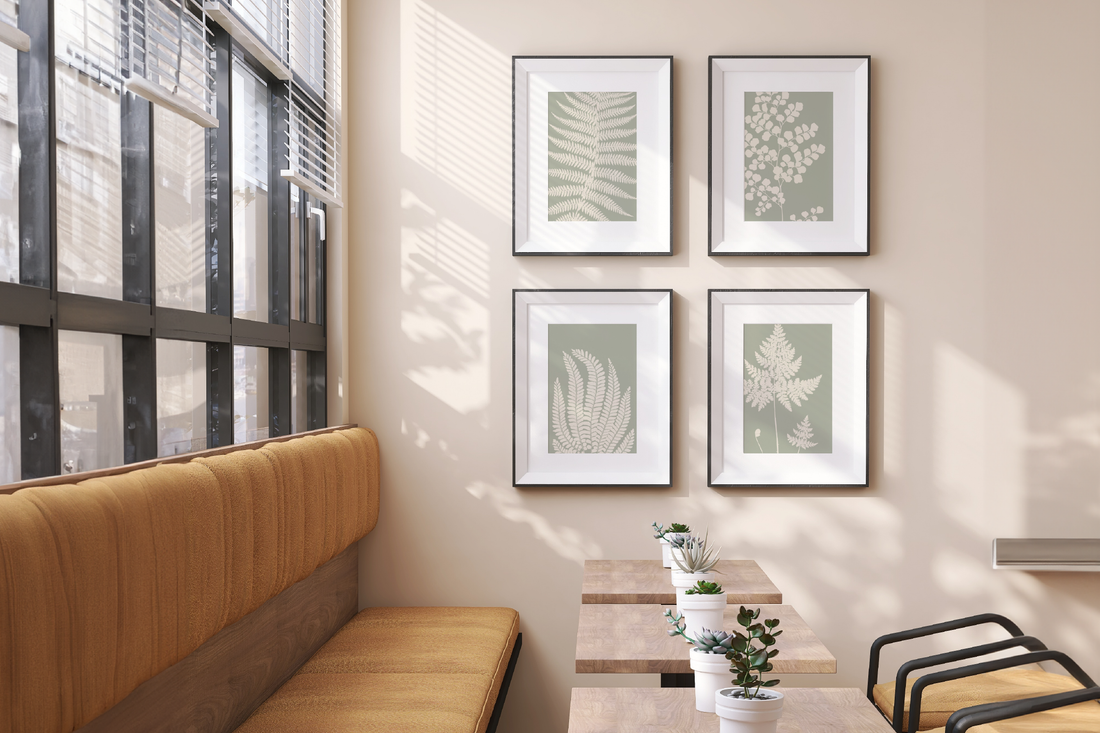In the realm of hospitality, every detail contributes to the overall guest experience. From the decor to the ambiance, each element plays a crucial role in shaping the atmosphere of a space. One often overlooked aspect that can significantly impact the perception of a hospitality venue is lighting, especially when it comes to showcasing framed art. In this blog post, we'll explore the importance of lighting in hospitality settings and provide detailed examples and tips for effectively illuminating framed art to create stunning visual displays that enhance the guest experience.
Understanding the Impact of Lighting
Lighting is a powerful tool in the realm of interior design, capable of transforming the atmosphere and ambiance of a space with just the flick of a switch. From setting the mood to enhancing visual appeal and directing attention, the right lighting can elevate the presentation of framed art and create immersive environments that leave a lasting impression on guests. Here are some examples that show just how important the role of lighting in showcasing framed art in hospitality settings:
- Lighting sets the mood: The type and quality of lighting can evoke different emotions and perceptions among guests. Soft, warm lighting can create a cozy and intimate ambiance, while bright, cool lighting can convey a sense of energy and vibrancy.
- Enhances visual appeal: Proper lighting can enhance the colors, textures, and details of framed art, making them more visually appealing and captivating to guests.
- Draws attention: Strategic lighting can draw attention to specific pieces of art, guiding guests' gaze and highlighting key focal points within a space.
Types of Lighting for Framed Art
When it comes to showcasing framed art, the right lighting can make all the difference in enhancing its visual impact and creating a captivating display. Let's explore the various types of lighting options available for showcasing framed art:
Ambient lighting
Ambient lighting provides overall illumination in a space and serves as the foundation for showcasing framed art. Examples of ambient lighting include recessed lighting, track lighting, and wall sconces. These lighting fixtures ensure that the artwork is adequately illuminated without creating harsh shadows or glare, establishing a welcoming and inviting ambiance throughout the space.
Accent lighting
Accent lighting is specifically designed to direct focused light onto specific artwork, highlighting its details and creating visual interest. Track lights, picture lights, and adjustable spotlights are commonly used for accent lighting purposes. By strategically positioning accent lights, hospitality venues can draw attention to key pieces of framed art, guiding guests' gaze and enhancing their appreciation of the artwork's beauty and intricacy.
Natural lighting
Natural lighting harnesses sunlight to illuminate framed art, infusing the display with a dynamic and inviting glow. Large windows, skylights, and glass doors serve as effective sources of natural light, allowing the artwork to bask in the warmth and radiance of the sun. Natural lighting not only enhances the colors and textures of framed art but also creates a connection to the outdoor environment, fostering a sense of harmony and tranquility within the space.
Tips for Lighting Framed Art in Hospitality Settings:
The right lighting can enhance the beauty of artwork, draw attention to key pieces, and elevate the overall atmosphere of a space. Here are some expert tips for effectively lighting framed art in hospitality settings:
- Use adjustable lighting: Opt for lighting fixtures with adjustable settings or dimmers to have precise control over the intensity and direction of light. This flexibility allows you to tailor the lighting to suit different pieces of art, highlighting their unique features and ensuring they are showcased in the best possible light.
- Layer lighting: Create depth and dimension in the display of framed art by layering different lighting sources. Combine ambient lighting, accent lighting, and natural lighting to add visual interest and enhance the overall ambiance of the space. This layered approach adds richness to the environment and creates a more dynamic viewing experience for guests.
- Consider artwork placement: Strategically position lighting fixtures to illuminate artwork from multiple angles and minimize shadows. Experiment with different lighting angles and heights to find the most flattering illumination for each piece. By carefully considering the placement of lighting, you can accentuate the details of the artwork and create a captivating display.
- Choose the right color temperature: Select lighting with color temperatures that complement the colors and tones of the framed art. Warm white lighting (2700-3000 Kelvin) enhances warm tones and textures, while cool white lighting (3500-4100 Kelvin) accentuates cool tones and contrasts. By choosing the appropriate color temperature, you can enhance the visual impact of the artwork and create the desired atmosphere in the space.
- Test lighting arrangements: Before finalizing lighting installations, conduct thorough tests to assess the effectiveness of different lighting arrangements. Make adjustments as needed to achieve the desired visual impact and ensure that each piece of art is showcased to its full potential. Testing lighting arrangements allows you to fine-tune the lighting design and create a stunning display that enhances the overall guest experience.
Enlightened Displays: Elevating Hospitality Art
In the realm of hospitality design, lighting plays a crucial role in showcasing framed art and creating memorable guest experiences. By understanding the impact of lighting, utilizing appropriate lighting techniques, and implementing strategic lighting arrangements, hospitality venues can elevate the visual appeal of their framed art displays and create immersive environments that captivate and delight guests.

